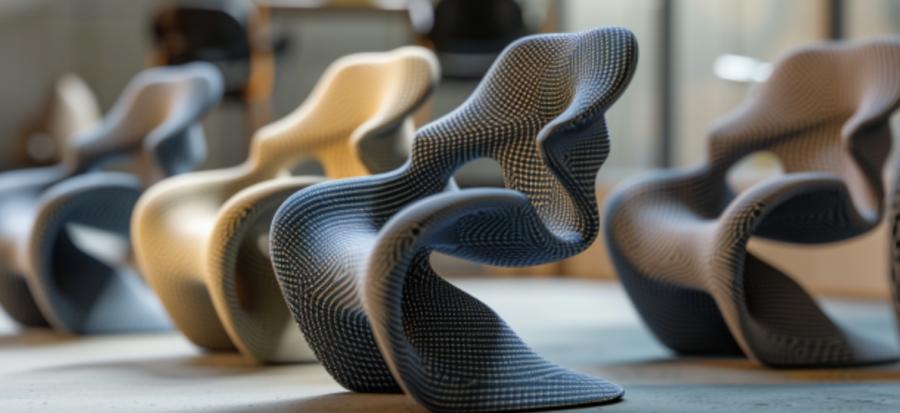Unlike traditional 3D modeling, which involves pushing, pulling, and swearing at polygons, procedural modeling uses rules and algorithms to generate forms. That might sound cold and clinical—until you see what happens when you tweak a few sliders and accidentally create a coffee table that looks like it might take off into low Earth orbit. Or maybe that’s exactly the vibe you’re going for.
Why Go Procedural for Prototypes?
Prototyping furniture involves exploring lots of iterations: tall legs, short legs, curved backs, flat arms, different materials, different densities. Doing that manually can turn a designer into a tired raccoon rifling through endless versions of the same model.Procedural modeling lets you create parametric systems—meaning your chair or desk isn’t one static model, it’s a flexible system of variables. Change the seat height? One slider. Alter the curvature of the backrest? Done. Adjust the number of spindles like you’re tuning a harp in hell? Just add a range node.
In practical terms, this means designers can:
- Test dozens (or hundreds) of design variations with minimal effort
- Standardize parts and dimensions for later fabrication
- Avoid carpal tunnel from all the clicking and dragging
Tools That Make the Magic Happen
Not all software handles procedural modeling equally, and some of them seem designed specifically to test your patience. But a few have emerged as go-to options in this space:- Houdini – Originally built for visual effects, Houdini is terrifyingly powerful. It’s the sort of software where you can build an entire modular bookshelf from scratch… if you first sacrifice an evening watching 4-hour tutorials by someone named Sven.
- Blender with Geometry Nodes – Blender has entered the procedural chat and it’s brought geometry nodes to the party. These allow for node-based modeling systems without selling your soul or maxing your RAM.
- Grasshopper for Rhino – A favorite among architects and furniture designers, Grasshopper is a visual programming language that’s addictive once you get past the “I have no idea what’s going on” phase.
A Chair, But Make It a Hundred Ways
Say you’re designing a minimalist lounge chair. The client wants options, and by “options” they mean a catalog’s worth of slightly different silhouettes that they’ll study intensely before picking the very first one. You build your initial form using parametric rules: seat angle, leg thickness, armrest height, material finish. Instead of creating 40 models by hand, you adjust a few values and generate iterations in minutes.One studio working with Scandinavian-style seating actually developed a generative system that could produce 120 viable chair variants with different leg positions, back angles, and joinery types. Not all of them were production-ready, but many passed ergonomic simulations and were ready for rendering or prototyping. Also, one looked suspiciously like a praying mantis—but that’s just bonus content.
Workflow That Doesn’t Make You Weep
One of the lesser-celebrated joys of procedural modeling is the sheer reduction in repetitive tasks. In a standard CAD-to-3D workflow, every time a design change rolls in, you typically have to dig into the model and redo a sequence of operations that went just fine the first time and are now purely punitive.With procedural modeling, those operations are saved as a non-destructive system. Change the seat depth? It updates everything downstream—leg placement, center of mass, even the model’s smug sense of self-satisfaction.
A basic example workflow might look like this:
- Define a parametric base form (like the seat block)
- Add rules for geometry (angles, bevels, cutouts)
- Control dimensions through exposed parameters
- Apply materials or surface treatments based on rules (wood if flat, metal if curved)
- Export multiple versions without manually duplicating or adjusting each one
When Robots Respect Craft
There’s a fair question about whether algorithmic design distances us from the handcrafted ethos of furniture making. The short answer is: not if you’re using it right. Procedural modeling isn’t about mass-producing soulless cubes—it’s about accelerating exploration.Designers who understand materials—how wood bends, how upholstery stretches, how joints fail—still need to embed those realities into their models. The algorithm doesn’t know your product has to survive a toddler’s rampage or the weight of someone who shops exclusively in cast iron cookware. You do.
So while procedural systems can give you ten thousand designs, they rely on your ability to know which of those ten thousand won’t collapse under real-world use or look like it belongs on an alien cruise ship.
Wood You Believe It?
Procedural modeling is the workshop assistant that never sleeps, doesn’t question your weirdest design whims, and lets you focus on the important stuff: how the chair feels, what it says, and whether it might be improved by adding one unnecessary brass detail.By leveraging tools that let you manipulate design elements on the fly, you spend less time modeling and more time crafting. That’s not automation replacing creativity—it’s automation giving you back the hours you lost rebuilding the same model for the fifth time.
Sure, it takes time to learn. And sure, your first procedural model might end up looking like a haunted ironing board. But once you dial it in, you’re not just designing faster—you’re designing better. More versions, more refinement, fewer wrist cramps.
So the next time you need 30 versions of a bar stool before lunch, go procedural. Your future self, and your chiropractor, will thank you.
Article kindly provided by Danthree Studio

